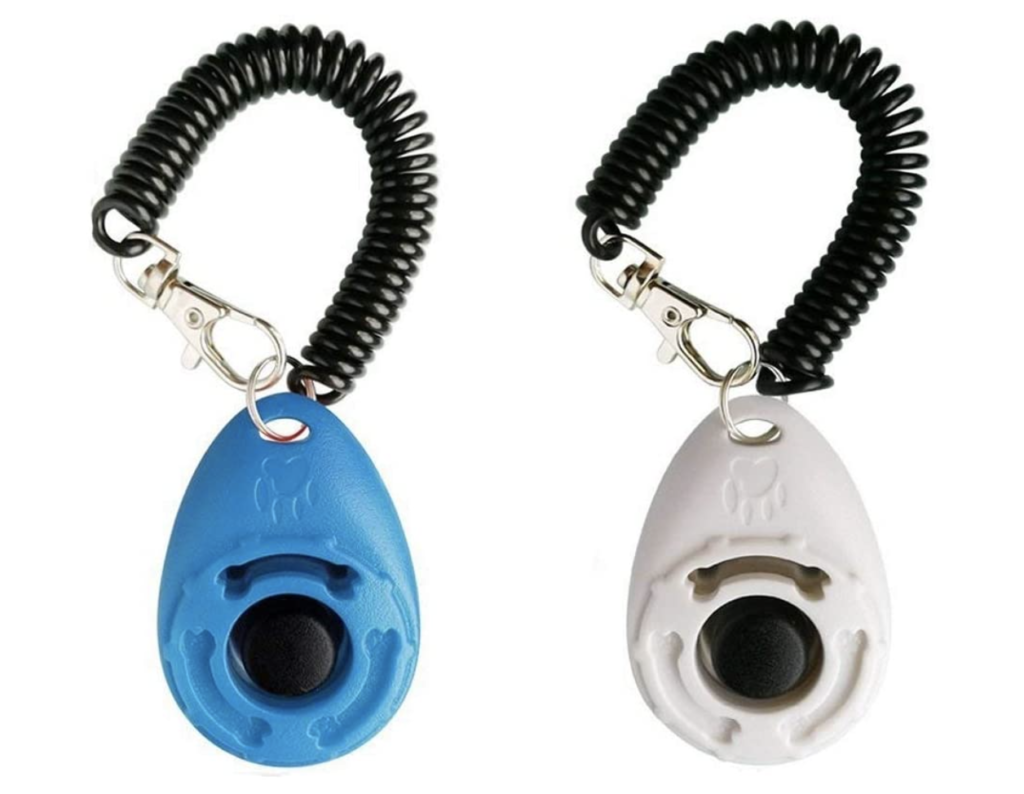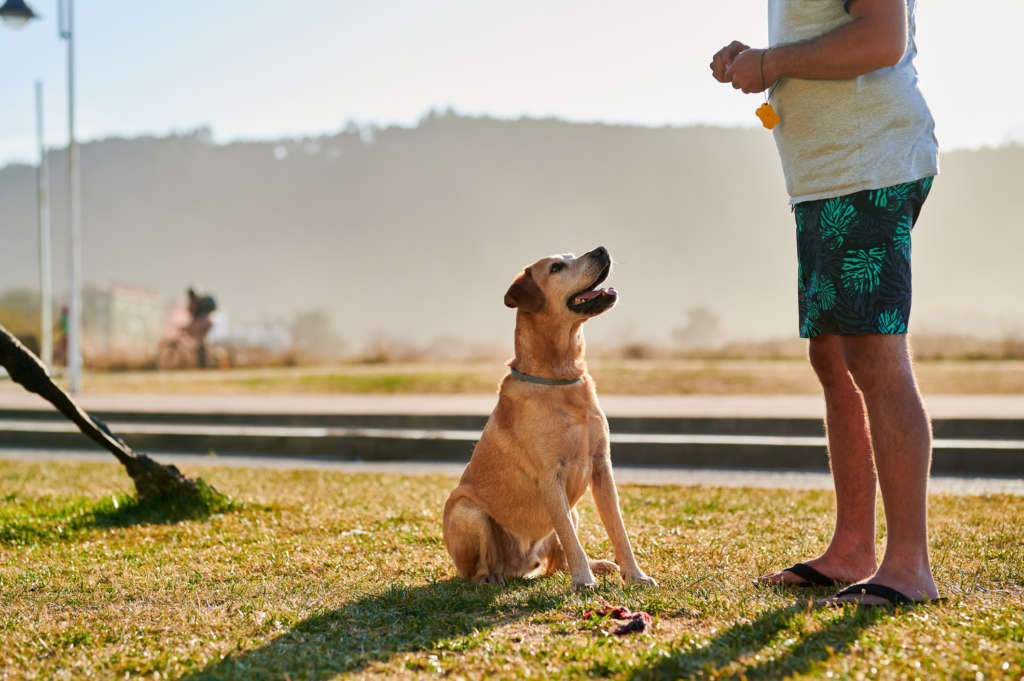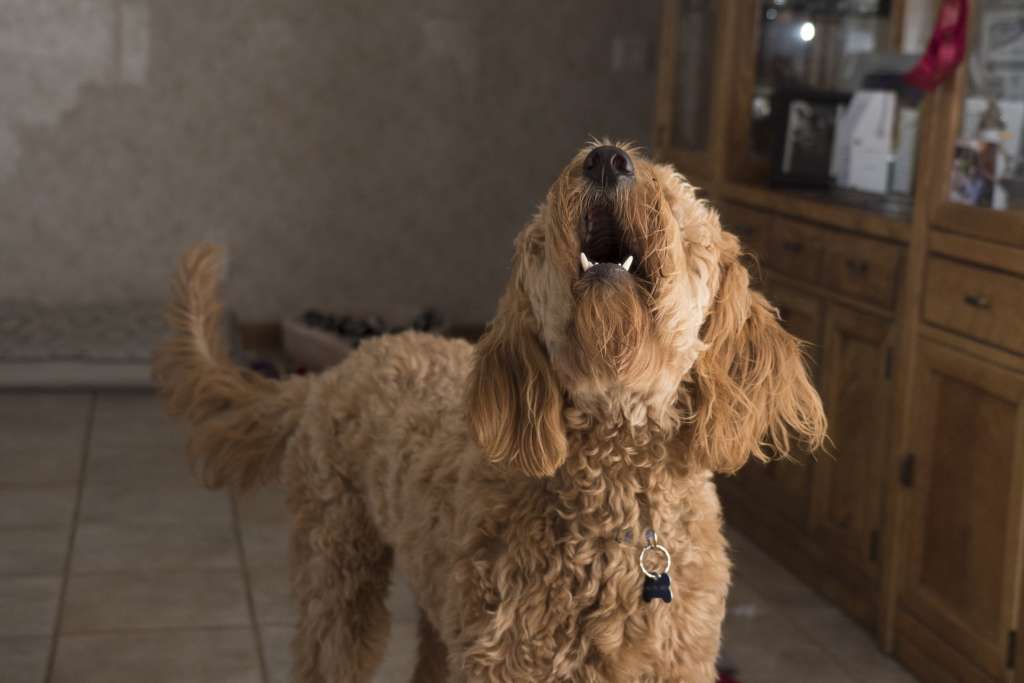How To Clicker Train Your Dog
|
|
Time to read 5 min
|
|
Time to read 5 min
Clicker training is a great way to make communication easier between you and your dog—young, old, brand new, or any dog in-between. It's been popular among dog owners and trainers since the 1990s because it allows us to quickly develop a shared language of understanding with our dogs. Here are the basics:
Clickers are a small plastic box or device that, when pressed, make a clear clicking noise. The clicker itself isn’t a remote control or a magic button. Rather, clickers are effective because they become a conditioned reinforcer, meaning that our dogs quickly learn that whenever they hear the sound of the clicker, they'll get a reward (treat).
Clicker training is especially effective because it allows us to clearly communicate to our dogs that they've performed a specific behavior or movement we like.
Some people mistakenly think that the sound of the clicker is the reward, but for dogs the clicker is simply a clear signal that the reward is coming. When dogs are rewarded for doing something you want, they're far more likely to repeat that behavior again (the primarily reason positive reinforcement training is so effective).
Alternately, you can use a marker word like “good” or “yes” when your dog does what you want to let them know a treat is coming. The sound of a clicker, however, often makes more sense to dogs because it’s a clear and consistent sound.
To get started with clicker training your dog or puppy, you should have:
Very rarely, some extremely sound sensitive dogs may be alarmed or uncomfortable with the sound of the clicker. In this scenario, you can find quieter clickers that may better suit shy or sensitive dogs.
The first step to introducing your dog to a clicker is to teach them that the sound of the clicker means they're about to get a reward—a process called “charging” the clicker.
At this stage, your dog is essentially getting a treat for doing “nothing,” but that's ok! It's still important. At this point, you don’t want to give any cues or ask your dog to do anything, and ideally your dog should be doing something different each time you click, such as:
Clicking while your dog is doing random and different things prevents them from misinterpreting the meaning of the click (i.e., thinking they should repeat the same thing, like sitting, to get the click and treat). That comes next!
Once your dog understands that clicks mean treats, it’s time to start incorporating the clicker into a training routine for a particular trick or skill. Once a dog is confident with a new skill, many trainers will transition to praising and treating the behavior when they don’t have a clicker handy, but while working on new skills, a clicker can help your dog learn faster. Two ways to teach with a clicker include techniques called luring or capturing.
One of the joys of clicker training is that it requires our training interactions with our dogs to be rooted in a positive reinforcement approach. Clicker training can be used for more than just tricks; the technique is also useful for adjusting behavior you might find challenging, like barking at the neighbor’s dogs when your dog goes outside, or jumping up on guests.
Instead of yelling at your dog to stop barking, a clicker can be an effective tool for helping to shift your dog’s behavior. Here's how it works:
Instead of scolding your dog for jumping, proactively teach them that doing something else is more fun!
Want to learn more about Clicker Training? The national Clicker Expo conferences (there will be a virtual option in 2022) is a great way to connect with other people teaching basic manners and advanced skills to their pets with positive reinforcement methods like clicker training!
Dog joy delivered every month!




